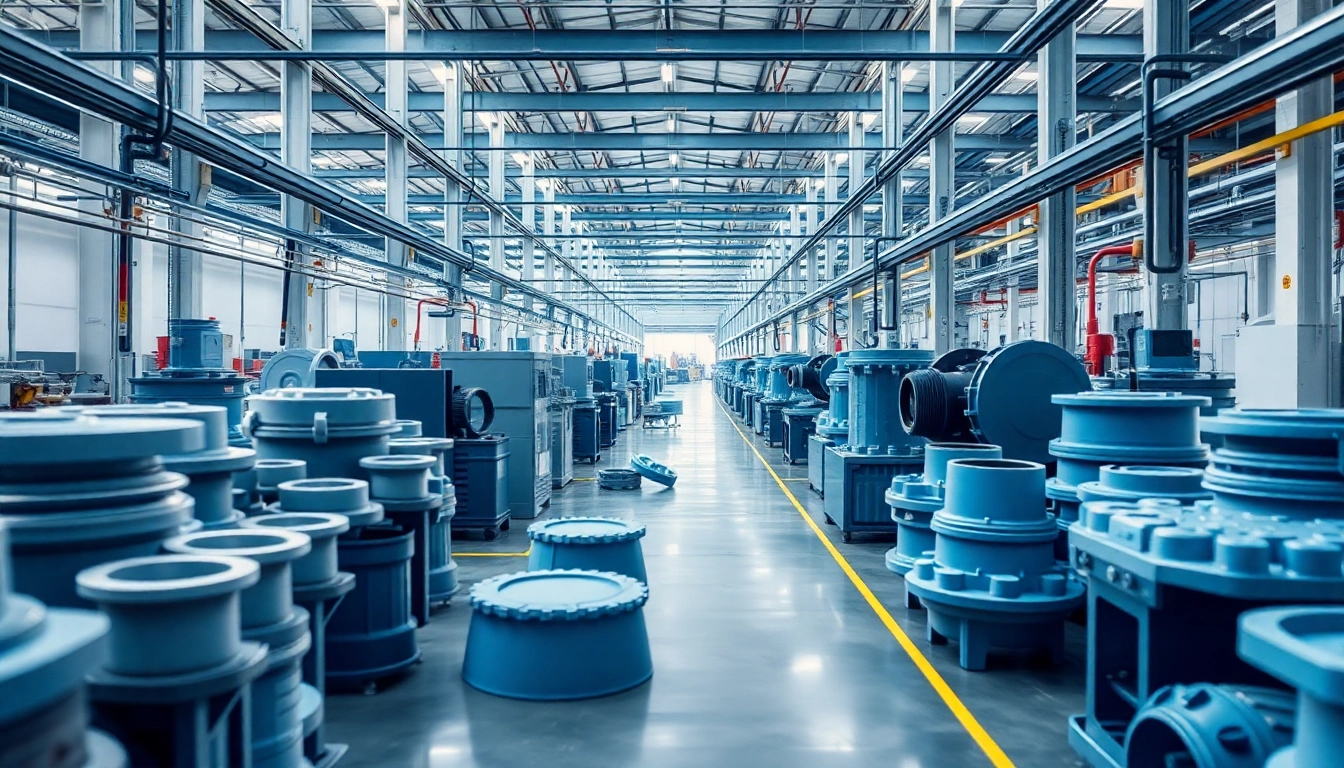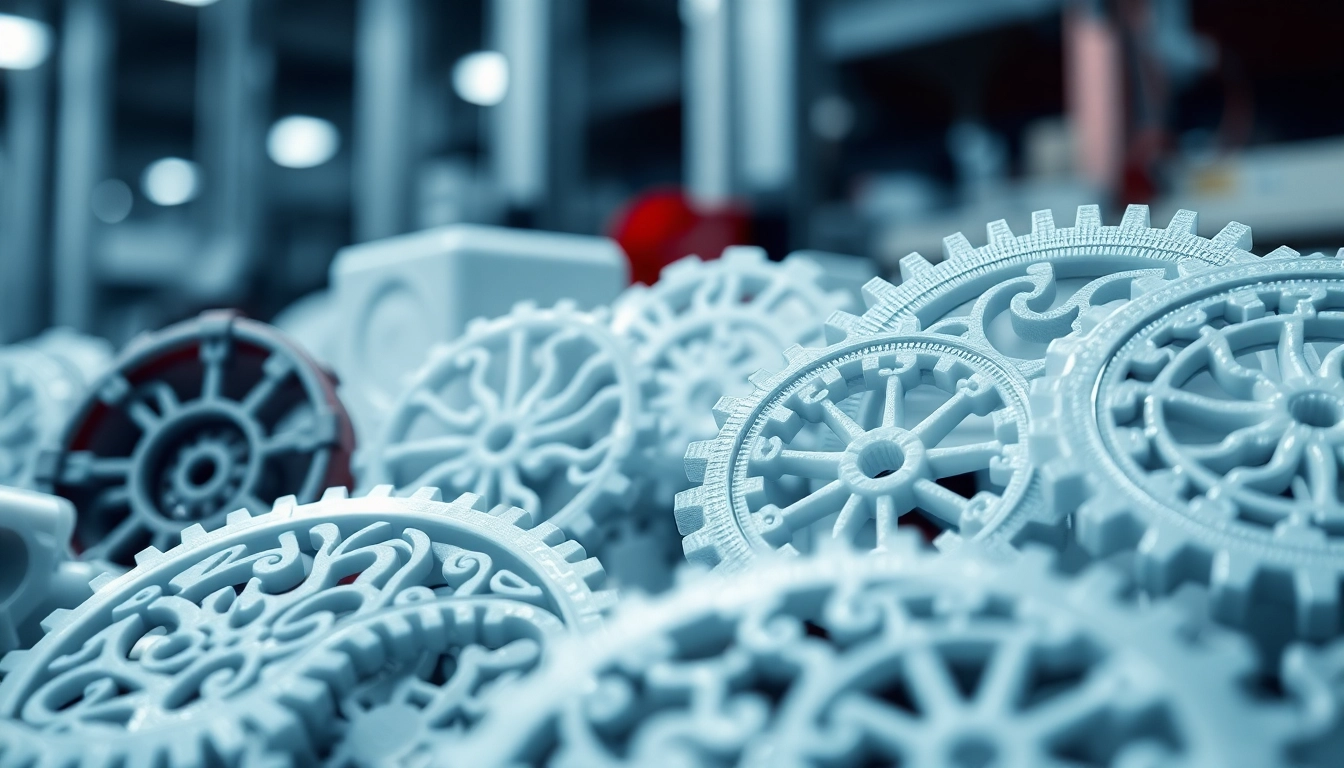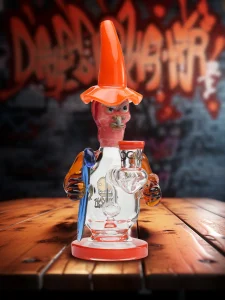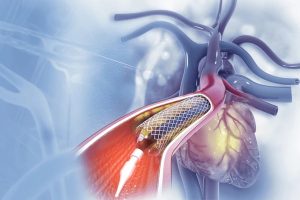Enhancing Product Efficiency with Blow Moulded Plastic Parts: Techniques & Applications
Understanding Blow Moulded Plastic Parts
Blow moulded plastic parts are integral to a wide array of industries, offering efficiency, versatility, and durability. This manufacturing technique involves creating hollow shapes by inflating a heated plastic tube, known as a parison, inside a mold. The process is essential in delivering products that range from complex automobile components to everyday containers. The efficacy and customization options available through blow moulding make it a preferred choice in modern manufacturing. For a deeper dive into blow moulded plastic parts, you can refer to blow moulded plastic parts and explore the various applications and innovations in this field.
What are Blow Moulded Plastic Parts?
At its core, blow moulding is a manufacturing process that forms hollow plastic products. Typically, this method is employed to create items such as bottles, containers, and a range of other hollow shapes. The blow moulding technique is categorized into three primary types: extrusion blow moulding, injection blow moulding, and injection stretch blow moulding. Each method has unique advantages and is suited for specific applications.
Key Benefits of Using Blow Moulded Plastic Parts
The benefits of employing blow moulded plastic parts are substantial:
- Cost-Effectiveness: Automated processes reduce labor costs and increase production speed.
- Efficiency: Blow moulding allows for rapid production cycles, enabling high-output manufacturing processes.
- Design Flexibility: This technique offers extensive options for customization in design and size.
- Material Versatility: A wide variety of thermoplastics can be used, accommodating diverse product requirements.
Common Applications of Blow Moulded Plastic Parts
Blow moulded plastic parts find utility in numerous sectors, including:
- Consumer Goods: Beverage bottles, container packaging.
- Automotive: Fuel tanks, air ducts.
- Medical: Equipment housings, disposable medical devices.
- Construction: Components such as tanks and plumbing fixtures.
Types of Blow Moulding Processes
Extrusion Blow Moulding Explained
This process begins by extruding a heated plastic tube. Once the tube, or parison, has formed, it is placed into a cooled mold. Compressed air is then injected to expand the parison against the mold walls, forming the desired shape as it cools. The efficiency of extrusion blow moulding makes it ideal for large runs of uniform products.
Injection Blow Moulding Overview
Injection blow moulding combines the processes of injection moulding and blow moulding. Initially, the plastic is injected into a mold to form a preform. The preform is then transformed into a finished product through blow moulding. This method is particularly beneficial when smaller, high-precision parts are required.
Choosing the Right Moulding Process
Selecting the appropriate blow moulding technique hinges on several factors, including:
- Product Design: Complex shapes may require specific moulding techniques.
- Material Properties: Certain materials perform better with specific processes.
- Production Volume: High-output needs may lean towards extrusion blow moulding.
- Cost Constraints: Budget limitations may influence the choice of process.
Materials Used in Blow Moulding
Popular Plastics for Blow Moulding
Several types of plastics are favored in blow moulding, including:
- Polyethylene (PE): Commonly used for its durability and flexibility.
- Polypropylene (PP): Known for its chemical resistance and elasticity.
- Polyethylene Terephthalate (PET): Prized for its clarity and strength, especially in beverage applications.
- Polyvinyl Chloride (PVC): Utilized in construction and plumbing applications due to its rigidity.
Comparing Material Properties
When it comes to selecting a material for blow moulding, understanding the properties of each plastic type is crucial. For instance, PET demonstrates superior barrier properties against moisture, which makes it a prime choice for food and beverage containers. In contrast, PE is preferable when flexibility and impact resistance are priorities.
Sustainability in Blow Moulding Materials
With rising environmental concerns, the blow moulting industry is increasingly adopting sustainable practices. It includes the use of recycled plastics and biodegradable materials. Moreover, innovations in material science hint at future developments in eco-friendly blow moulding materials that promise to reduce the industry’s carbon footprint.
Challenges in Blow Moulding Production
Common Problems and Solutions
Like any manufacturing process, blow moulding does come with its set of challenges, such as:
- Defects in Products: Issues like uneven wall thickness can arise. Regular maintenance of molds and precise control over production parameters can mitigate these problems.
- Material Waste: Inefficient design or process can lead to excess scraps. Adopting a design for manufacturability (DFM) approach can help reduce waste.
Quality Control in Manufacturing
Quality control is paramount in ensuring the integrity and safety of blow moulded products. Implementing robust quality assurance protocols, including regular mould inspections and material testing, can enhance product consistency and compliance with industry standards.
Cost Considerations and Budgeting
Developing a cost-effective blow moulding strategy involves careful budgeting and planning. Factors such as equipment costs, material prices, and labor expenses must be taken into account. Leveraging technology for predictive maintenance and inventory management can result in significant savings over time.
The Future of Blow Moulded Plastic Parts
Innovations in Blow Moulding Technology
As technology evolves, the blow moulding industry is experiencing remarkable innovations. Automated systems and artificial intelligence (AI) are enhancing precision and efficiency, while advancements in material science are yielding stronger, lighter, and more sustainable materials.
Trends Shaping the Blow Moulding Industry
Several key trends are influencing the future landscape of blow moulding:
- Shift towards Sustainability: Companies are increasingly prioritizing eco-friendly practices.
- Growth in E-commerce: Increased demand for packaging materials due to the rise in online shopping.
- Customization: Consumers demand unique and personalized product offerings.
Predictions for Market Growth
Market analyses suggest considerable growth in the blow moulding sector, fueled by increased demand across automotive, healthcare, and consumer goods industries. As manufacturers adopt cutting-edge technology and explore new materials, the industry is set to expand this decade, presenting numerous opportunities for innovation and investment.












Post Comment